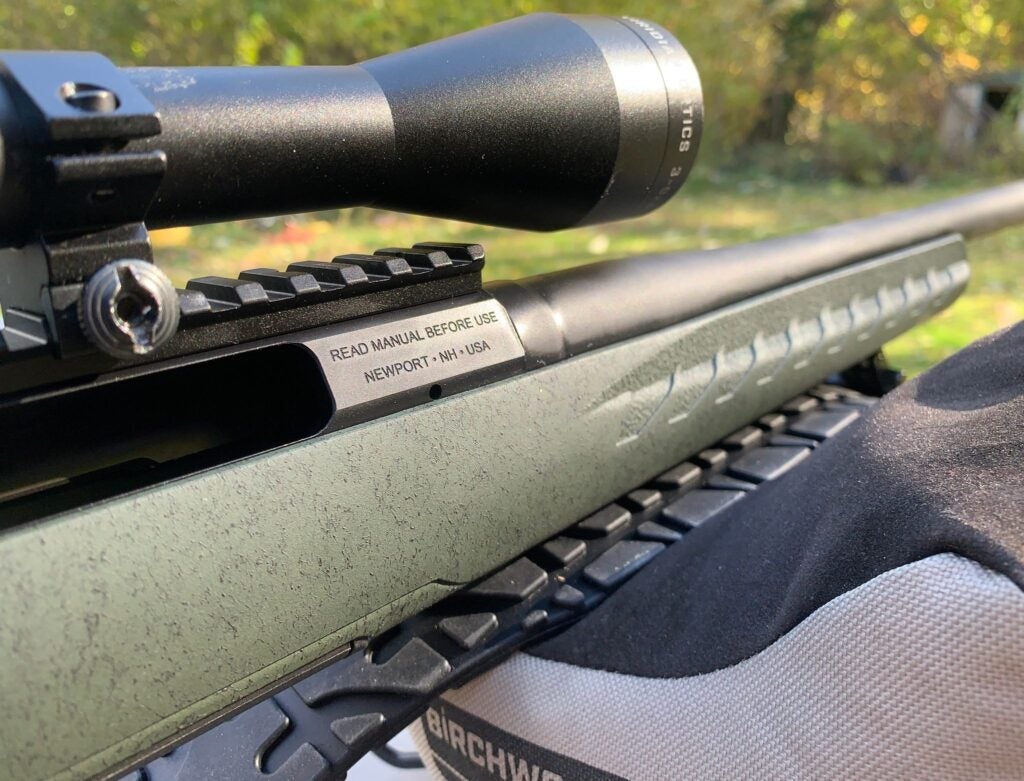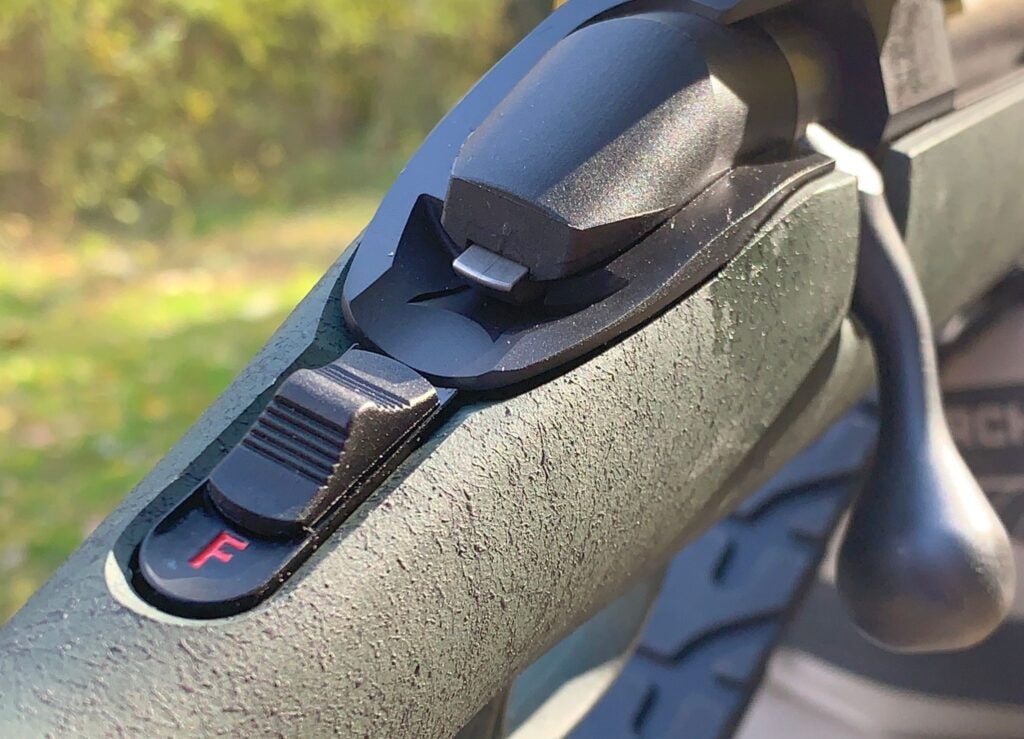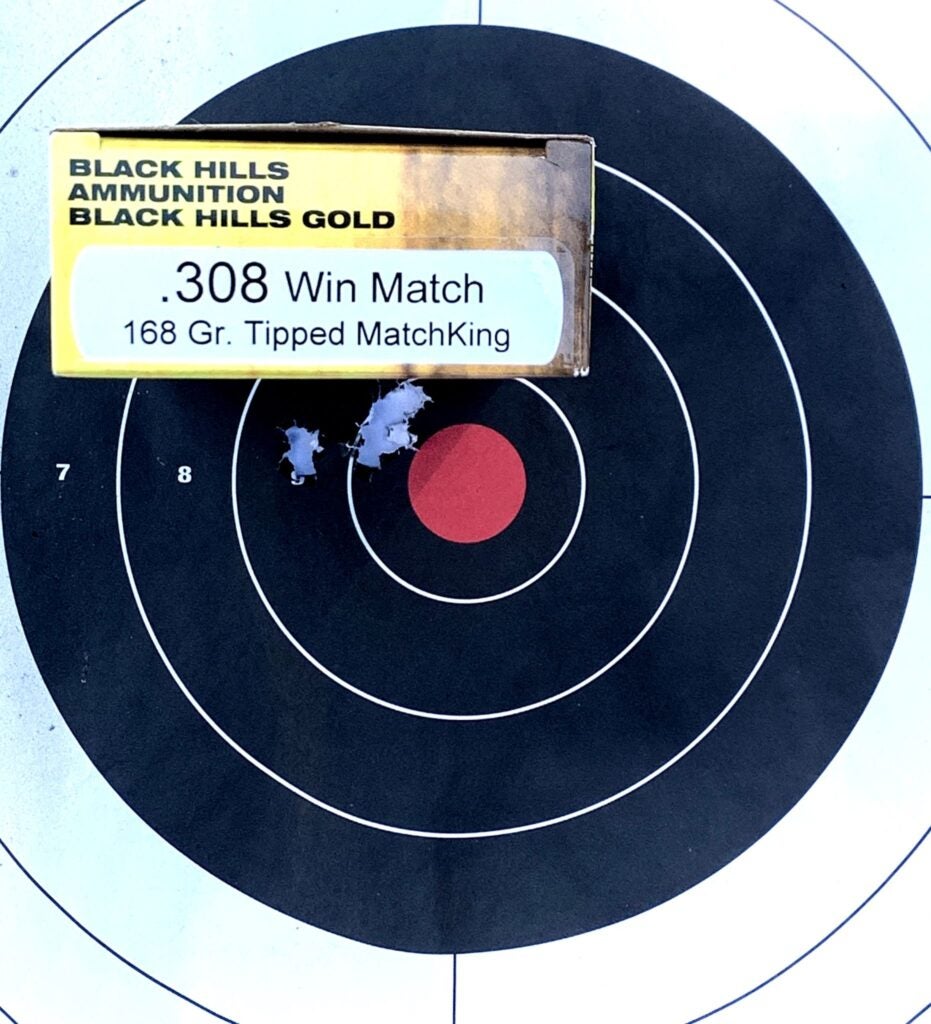Ruger Glenfield Model A .308 Review

Ruger’s acquisition of Marlin Firearms in 2020 opened a lot of doors. I think most shooters, by now, have seen what Ruger has done with the classic Marlin 336 lever-action. It is downright beautiful, and it shoots just as good as it looks.
What many didn’t realize (myself included) was that when Ruger acquired Marlin, it also acquired Glenfield. Why? Glenfield was Marlin’s budget line of guns, and they came along with the purchase. I recall Glenfield .22 rifles from the late 1960s and into the 1970s. They were well-made, not fancy, and they worked.
About Glenfield
The Glenfield name was applied to less expensive rifles that Marlin marketed through mass retailers, such as J. C. Penney and others. Often made with plain hardwood or beech stocks instead of walnut, the Glenfield Model 60 and others were good sellers. For you geeks out there that must know, here is a chart I found on Firearmwiki.com that shows the correlation between Glenfield and Marlin models…
It’s important to realize that Marlin didn’t just “cheap out” on the Glenfields. They used Marlin’s proprietary rifling and were well put together. If you find one today for sale, by and large, it should be a decent deal. They were made to last, but just cut costs in areas that didn’t affect reliability and accuracy. I’ve seen some on Gunbroker.com.
I looked for a predecessor Model A in .308, made with the Glenfield name before Ruger acquired it, but did not find one. The only centerfire Glenfield rifles I found were a few versions of the Marlin 336 in .30-30. Basically, Ruger has introduced a less expensive version of its American rifle line and branded it Glenfield. The new rifle is available in 243 Win, .270 Win, 6.5 Creedmoor, .308 Win, .30-06 Springfield, .350 Legend, and .450 Bushmaster calibers. The one we’re looking at here is the .308 Winchester version.
This Model A
(Sorry, but every time I hear or say “Model A”, I don’t think of a rifle. Henry Ford’s creation always comes to mind… I know guys who have one. OK, back to the story…)
In my opinion, Ruger is laying the foundation for a possible series of long guns bearing the Glenfield name. Since there were no Glenfield Model A centerfire rifles before, the door is open to introducing more, maybe with different model numbers/letters. I could be wrong, but I’ve followed Ruger for decades and have seen similar situations before. There’s nothing wrong with that, of course… the more, the merrier, I always say. Add in the fact that this rifle sells, in the real world, for about $400, and I could see this being a successful venture. Affordable centerfire rifles can help move new shooters into the tent.
That’s me, actually… I am just now, after almost 50 years of shooting, trying to move into the centerfire rifle camp a bit more. I’ve always been a handgun type of guy, but I’m discovering the joys of longer-range, centerfire rifles. (I just did a review of the new .277 Fury and totally enjoyed shooting it.) I also have a Springfield Armory M1A coming in. Black Hills is supplying my ammo, so that opens doors to reviews that may not have happened before. Look for that rifle in a future review.
Specifications
Here you go, right from the Model A web page…
- Model # 52001
- Caliber 308 Win
- Capacity 4
- Stock Moss Green Splatter
- Material Alloy Steel
- Finish Matte Black
- Sights None – Picatinny Rail Installed
- Magazine Type Flush Fit
- Weight 6.3 lb.
- Overall Length 40″
- Barrel Length 20″
- Length of Pull 13.75″
- Thread Pattern 5/8″-24
- Twist 1:10″ RH
- Grooves 5
- Suggested Retail $499.00
- Instruction Manual Glenfield™ Model A
Where To Buy
Features
- Adjustable trigger offers a crisp release with a pull weight that is user adjustable between 3 and 5 pounds, allowing shooters to make that perfect shot. I measured it at 3 pounds, 4 ounces average on this rifle, with no adjustment.
- Splatter finished stock provides excellent grip without being too sharp or abrasive.
- Soft rubber buttpad is crafted for maximum recoil reduction.
- The one-piece, three-lug bolt with 70° throw provides ample scope clearance and utilizes a full-diameter bolt body and dual cocking cams for smooth, easy cycling from the shoulder.
- Patented Power Bedding™, integral bedding block system positively locates the receiver and free-floats the barrel for outstanding accuracy.
- Factory-installed, one-piece Picatinny scope base.
- Threaded barrel with factory-installed thread protector is cold hammer-forged, resulting in ultra-precise rifling that provides exceptional accuracy and longevity.
- The visible, accessible and easy-to-actuate two-position tang safety provides instant security.
- Includes: one magazine; sling swivel studs.
Observations
I was impressed with this rifle. As I mentioned above, it sells in stores for about $400. That lower-end price still buys you a pretty decent feature set. Here are some things I noticed…
- The adjustable trigger isn’t exactly match-grade, but for general hunting purposes, a three-pound minimum is not bad. Mine breaks right at 3 pounds out of the box with no creep. It hits the wall, and “snap”. I like it. Combine it with the tang-mounted safety, and I think we have a winner. Also, I am left-handed, as those of you who have read my reviews might recall, and cross-bolt safeties are a no-no. I can deal with the bolt handle being on the “wrong” side – I’m used to that – but the safety is just where it needs to be.
- When the original, Gen 1 Americans came out, they didn’t have a Picatinny rail. They had the traditional scope mount holes, drilled and tapped. I much prefer the rail. Even though its looks don’t do anything for the rifle, it is certainly more flexible in allowing optics to be mounted. I really don’t see red dots being mounted on these guns – they are made for longer ranges – but some scopes can be finicky about fore-and-aft placement. Here you have a choice.

- Speaking of mounting a scope, many rifles use a two-lug bolt from the Mauser design, but Ruger chose to go with a three-lug bolt. That shortens the arc you have to throw the bolt handle to open it, which in turn means you can mount a scope with a larger objective lens if you want.

- Another small detail that is appreciated is the inclusion of sling swivel studs. I like to put a traditional sling on most long guns, and not having to track studs down is a good thing. Add in a decent recoil pad, and the “small details” box can be checked.
- One other feature I like is that the back of the firing pin protrudes from under the bolt shroud when the rifle is cocked. This lets you quickly see the condition of the rifle.

- You can tell that Ruger was trying to cut costs with the Glenfield. They do not include a full-blown owner’s manual but instead have a Quick Start guide. The last specification above is a link to the Model A manual that you can download.
- The stock’s splatter finish provides enough grip without sandpapering your hands. A good friend, a former deputy, picked it up and was impressed with its level of “stickiness” – just enough.
- Last (but certainly not least, as the saying goes), the rifling and bedding are top-notch. The barrel is free-floated… something that many other rifles in this price class can’t claim. Plus, that barrel is cold-forged, with Ruger’s great rifling. Those factors contribute to accuracy in a big way.
Range Time

I have explained in previous reviews that my 100-yard range has been shortened to about 90, as a huge tree decided to give up the ghost during a storm, and it blocks my full-distance target. So, I make do. Even so, I could get a good idea of the overall accuracy of the Model A.
I am blessed to be provided ammo by Black Hills, so I broke out a couple of .308 Win Match loads they’d sent. They were the Black Hills Gold 168-grain Tipped Match King and the red-boxed 168-grain Boat-Tail Hollow Point.
So, I stuck a Viridian 3-9×40 scope on the rifle and started shooting. Here are a couple of sample targets, once I got close to being sighted in…

Black Hills Gold .308 Win Match 168 grain Tipped Match King
- Velocity: 2547 fps
- ES: 45
- SD: 19.1
- BC: .492

Black Hills .308 Win Match 168-grain Boat-Tail Hollow Point
- Velocity: 2556 fps
- ES: 29
- SD: 12
- BC: .593
As you can see, both of these loads are M.O.A.-capable. I admit I am not the best rifle shot around, but here we can see the start of some pretty accurate days at the range. A better shot could make the holes touch each other. I came close. The rifle was fun to shoot, except for one thing…
One Glitch
Everything worked as advertised with the rifle when I shot it, except I had a few times when the extractor did not slip over the case rim, which left the case in the chamber. I used a cleaning rod to remove those cases… they weren’t stuck and they came right out. I’m thinking that the extraction issue might have been caused by “new-itis”. The more I shot it, the better it worked. If I continue to have issues with it, I’ll contact customer service at Ruger, and they’ll deal with it. This is not a large deal, but I thought they should at least know about it.
(UPDATE: The problem persisted. After calling Ruger about this issue, they decided to send me a new rifle. So, I sent the original back for them to examine, and I mounted the sling and scope from it on the new one. I was pleased with it… It works as advertised.)
A Plug For Radar
I broke out my Caldwell Velociradar chronograph to get a better idea of what this rifle with this ammo could do. This little gem allows you to not only clock the muzzle velocity, but if you set it up properly, it will give you downrange velocities and bullet ballistic coefficient numbers. It uses Chirp radar, not Doppler.
I also have an Athlon Rangecraft Velocity Pro chrono that I use for handguns and closer-range shooting. It’s quicker to use but offers only muzzle velocities as it uses Doppler radar – not Chirp like the Velociradar – and cannot provide downrange ballistics. The Garmin chrono is similar. If you are thinking about getting a radar chrono, either of these is a good bet. I’ve owned over the years several optical chronos, but once you use a radar model, you’ll never again set up screens downrange. I’ve shot my share of chronos in the past, but with these radar units, that is a thing of the past.
Do You Need This Rifle?
I sometimes pose that question to readers. Of course, it’s one that only you can answer. However, if you are in the market for a lesser-expensive centerfire in any of the calibers this rifle comes in, you might want to give it a look. I am impressed with its feature set, considering its $400 street price. I think you could do worse. There are rifles out there that cost more but aren’t built the way this one is.
For an entry-level centerfire rifle shooter, it makes sense. You get a decent barrel, free-floated, with a three-lug bolt and Pic rail that allows almost any scope to be mounted. You also have an easily accessible safety with a cocked firing pin indicator. Add in the sling swivels and decent recoil pad, and this gun becomes more interesting.
So… do you need one? I leave that up to you. As for me, this rifle will not go back. It will serve me well during Indiana’s firearms deer season, which starts mid-November. I’ll keep you posted!
Links To Items Used In This Review
- Birchwood Casey Shooting Bags Filled, $40
- Birchwood Casey Eze-Scorer 8 Inch Bull’s-Eye Target, 26 Targets, $9
- Black Hills Ammunition
- Caldwell Max-Grip Sling, $31
- Caldwell Velociradar Radar Chronograph, $605
- Caldwell Ultimate Target Stand, $33
- GPS Medium Range Bag, $150
- MTM Case-Gard High-Low Shooting Table, $160
- Real Avid Viz-Max Bore Sighter, $140
- Walker Game Ear Firemax Active Hearing Protection, $160
- Birchwood Casey Range Cleaning Kit, $60
Read the full article here









